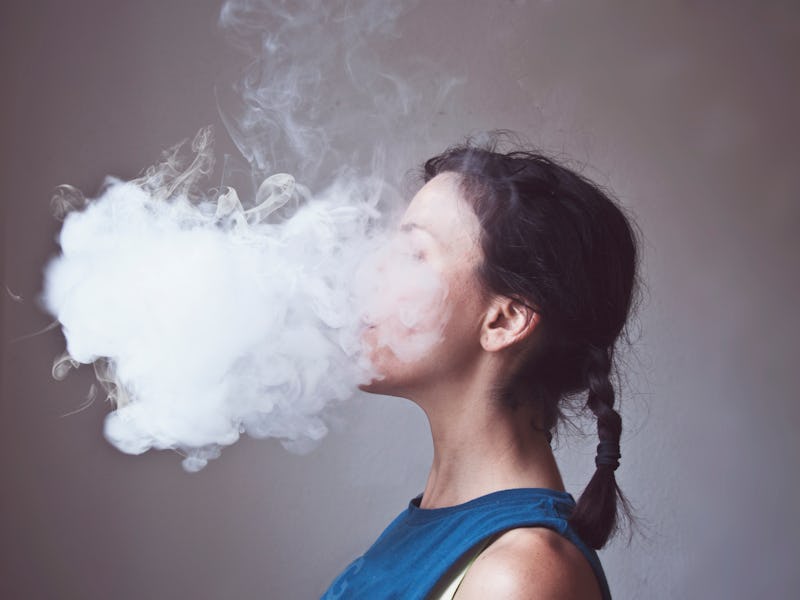Scientists Have More Bad News About Your Favorite Vape Flavors
Our apologies to the churro vape juice lovers.

We all know that vaping makes you look cool. Oh yeah, and apparently it can also help you quit smoking. But even if vaping is safer in some ways than smoking cigarettes, it’s most likely not safer than just breathing regular-ass air. And as great as all the wild, weird flavors of e-liquid can be, new research suggests that some common chemicals used to flavor vape juice could cause harm to people’s blood vessels.
In a paper published Thursday in the American Heart Association journal Arteriosclerosis, Thrombosis, and Vascular Biology, researchers show evidence that nine common vape juice flavoring chemicals pose dangers to endothelial cells — the cells that line blood vessels and lymph vessels. After exposing cultured endothelial cells to menthol (mint), acetylpyridine (burnt flavor), vanillin (vanilla), cinnamaldehyde (cinnamon), eugenol (clove), diacetyl (butter), dimethylpyrazine (strawberry), isoamyl acetate (banana), and eucalyptol (eucalyptus), the researchers inspected the cells. They found that high concentrations of all the flavor chemicals caused cell death and reactive oxygen species production — a sign of stress.
The researchers acknowledge that the levels of chemicals they used in the lab to induce cell death and ROS production are probably not realistic in real-world exposure from vaping, but they did identify some issues caused by a handful of the chemicals at lower levels. They found that low concentrations of the molecules used for menthol, clove, vanill, cinnamon, and burnt flavors caused inflammation in the endothelial cells, as well as decreased production of nitric oxide, a molecule that’s essential to blood vessels’ healthy function.
“Increased inflammation and a loss of nitric oxide are some of the first changes to occur leading up to cardiovascular disease and events like heart attacks and stroke, so they are considered early predictors of heart disease,” said Jessica Fetterman, Ph.D., an assistant professor of medicine at Boston University and first author on the study, in a statement. “Our findings suggest that these flavoring additives may have serious health consequences.”
This paper builds on previous research that found three vape juice chemicals that cause similar types of damage to white blood cells. In fact, two of those three chemicals, cinnamaldehyde and vanillin, were also identified as potentially harmful in this latest study. It brings us one step closer to figuring out the health risks of vaping.
So yeah, it seems a lot safer to vape than to smoke, but the simple fact is that inhaling anything besides air poses a health risk. And with the health risks posed by cinnamon and vanilla vape liquids, maybe it’s best to lay off the churro-flavored juice.